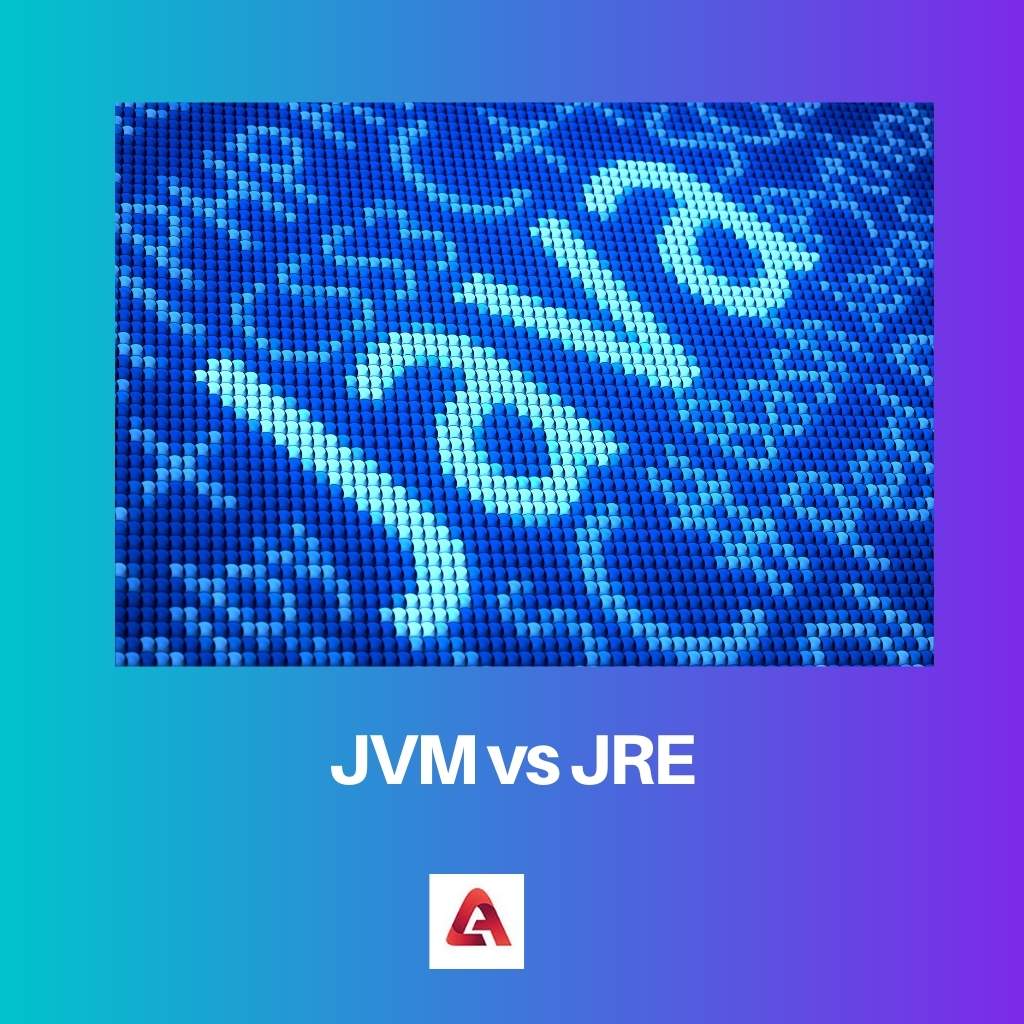A JVM is well-known as Java Virtual Machine, which stands for both the system and each application originally compiled for the Java Runtime Environment.
A JRE is well-known as Java Runtime Environment, is a software package that includes the Java SE Platform. Both JVM and JRE may seem extremely similar, yet they are different too.
Key Takeaways
- The JVM is responsible for executing Java bytecode, whereas the JRE is a runtime environment that includes the JVM, libraries, and other components.
- The JVM is platform-dependent, meaning different versions exist for different operating systems, while the JRE is platform-independent.
- The JVM optimizes bytecode at runtime, making it faster, while the JRE only executes the bytecode.
JVM vs JRE
JVM means Java Virtual Machine and is a self-contained, complete virtual machine that allows a computer to run Java programs and others compiled with Java bytecode. JRE means Java Runtime Environment and is a software layer that runs on the operating system and is required by Java programs to run correctly.

A JVM (Java Virtual Machine) is like a complete, self-contained world where all programs can run. Moreover, JVM can stand for both the system and each application originally compiled for the Java Runtime Environment.
Numerous implementations of JVM exist on many different platforms.
A JRE (Java Runtime Environment) is a software package that includes the Java SE Platform, which includes everything necessary to run any program or application written in the Java coding language.
However, the JRE (Java Runtime Environment) package cannot include or access any of the major Java libraries.
Comparison Table
| Parameters of Comparison | JVM | JRE |
|---|---|---|
| Definition | JVM is both the system and each application originally compiled for the Java Runtime Environment. | JRE includes everything necessary to run any applet or application written in the Java coding language. |
| Acronym | A JVM is an acronym for Java Virtual Machine. | JRE is an acronym for Java Runtime Environment. |
| Function | To run multiple concurrently running programs. | To run any program or application written in the Java coding language. |
| Implementation | Web applications, browsers, middleware systems, and operating systems. | Applications, libraries, run programs, and package classes. |
| Library Accessibility | JVM includes or can access any of the major Java libraries. | JRE package cannot include or access any of the major Java libraries. |
What is JVM?
A JVM is an acronym for Java Virtual Machine, which is a complete, self-contained world where all the programs can be run effortlessly.
Moreover, it stands for both the system and each application originally compiled for the Java Runtime Environment. The Java environment is very important in web applications, browsers, middleware, and operating systems.
A virtual machine (also known as an emulator) allows an operating system kernel to run multiple concurrently running programs, each of which may be different computers or even computer architectures.
Programs can be written in any programming language that can be compiled into machine code. If the program is saved as a file with the .java extension, it can then be executed by importing that file into a Java Virtual Machine.
The JVM executes the same bytecode that has been compiled for any platform. Moreover, a file can be executed with any JVM installed on any platform without modification.
There are numerous implementations of JVM that exist on many different platforms.
What is JRE?
JRE is well-known as Java Runtime Environment, which is mostly used in reference to downloading and installing different versions of the environment.
The JRE package contains the AWT (Abstract Window Toolkit), the Swing (Toolkit) Toolkit, and other GUI components. Moreover, it also contains the core classes that are necessary to write an applet or program compiled for Java.
Java Runtime Environment, which is around megabytes in size, contains the essential components that a computer needs to run Java applications.
Moreover, when someone clicks on a Java applet, they don’t even notice it installing the environment. Many variations in the naming scheme don’t matter for home users.
Moreover, numerous implementations of JRE exist on many different platforms.
The JRE package cannot include or access any of the major Java libraries and is a software package that includes the Java SE Platform, which includes everything necessary to run any applet or application written in the Java coding language.
Most of the software that uses the Java programming language to run needs a runtime environment to execute its instructions on the computer, so JRE is very important for the implementation of Applications, libraries, run programs, and package classes.
Main Differences Between JVM and JRE
- JVM is both the system and also each individual application that was originally compiled for the Java Runtime Environment, whereas JRE includes everything necessary to run any applet or application written in the Java coding language.
- A JVM is an acronym for Java Virtual Machine, whereas JRE is an acronym for Java Runtime Environment.
- JVM includes or can access any of the major Java libraries, whereas the JRE package cannot include or access any of the major Java libraries.
- A JVM includes everything necessary to run multiple concurrently running programs, whereas a JRE includes everything necessary to run any program or application written in the Java coding language.
- JVM is very important for the implementation of web applications, browsers, middleware systems, and operating systems, whereas JRE is very important for the implementation of Applications, libraries, run programs, and package classes.
- https://www.sciencedirect.com/science/article/pii/S0167739X19330675
- https://www.sciencedirect.com/science/article/pii/S0167642312000299